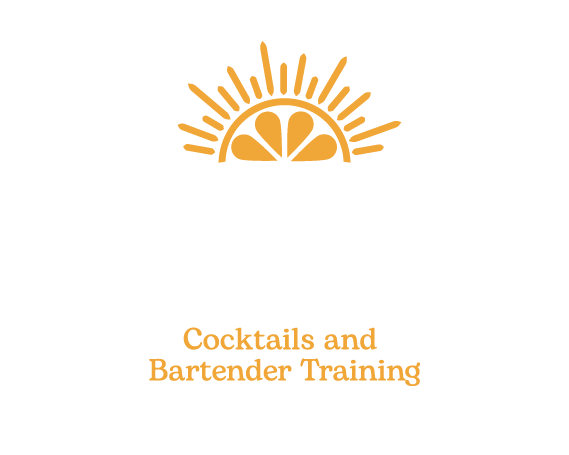Cocktails Of the Future: Great Scott!
Great cocktails are always, well, great. I’m often asked in my virtual cocktail classes or by friends, “What is your favorite cocktail?” Sometimes a sarcastic quip will do, “What day is it?” or “A daiquiri, like every other bartender in the world.” My honest answer, however, is nuanced. I like well-made and well-balanced cocktails. I like cocktails that tell stories. I like cocktails from bartenders who are proud of them. I like cocktails from bartenders who make me feel comfortable. Those are my favorite cocktails. Choosing a specific cocktail is impossible. For instance, I’m not a Cosmopolitan drinker per se, however, if I sat down at Dale Degroff’s bar, I absolutely (like every other bartender) would order one. Well-made cocktails will make someone’s night, or, at the very least be a silent feature of a great night with friends or family. Poorly-made cocktails, however, start the evening off on the wrong foot, get the guest complaining, or the guest begins to question everything the restaurant does.
My wife LOVED the Olivetta at the award-winning cocktail bar, Marvel Bar. It has (as I remember it) olive-washed Gordon’s gin (you read that right, Gordon’s), lemon juice, Liquor 43, and egg white. A very standard sour build with minor tweaks: it’s a brilliant cocktail. We would go there specifically for the cocktail. Conversely, on a different evening, she ordered a Daiquiri at another popular Minneapolis cocktail bar, took one sip, and let it sit there for the rest of the night. The cocktail was off-balanced. The atmosphere was busy and she was unable to address the situation. She ordered wine for the rest of the night - and every other time we’ve been back. One bad cocktail surely changes guest dynamics.
As bar managers, restaurant consultants, or even head bartenders there are two fundamental issues with that story that every restaurant needs to address. 1) How do we produce amazing cocktails every single time? 2) When something does go wrong, are we able to notice it’s happening? For a while, we thought we had figured out by batching spirits, sugars, and modifiers but problems arose in execution.
Cocktails made from scratch (à la minute) are wonderful when measurements are accurate and the cocktail is balanced - the proper ratio of spirit, sweet, bitter, and water. A bartender can either free-pour or use a jigger, but neither matters if the cocktail hits the table unbalanced: it’s too sweet or too bitter. For the past few years, we’ve solved that problem by batching cocktails. Put the spirit, sugar, and modifier into one bottle - already measured out - and keep fresh citrus in a different bottle. When a guest orders the cocktail, the bartender pours out, say, 3 ounces of “batch,” and 3/4 ounce citrus juice, she shakes it over ice, strains, and serves. This method is problematic because different batches have different measurements, different accompanying citrus, different bitters, garnishes, glassware, ice cubes…and you can see how mistakes start entering the equation. As well, if cocktails are too laborious to make, the restaurant needs to schedule more bartenders per shift, and the tip share for each bartender drops. The restaurant and cocktail bar industry is then left with a bunch of well-educated bartenders making mediocre money for producing award-winning cocktails. This is not sustainable.
In May, I went on a warehouse tour in Northeast Minneapolis of a new project by local cocktail experts Nick Kosevich, Jesse Held, and Jeff Erkkila. Their company is mimicking lemon, lime, and orange juice using a mixture of different acids and creating what’s called a “citrate.” As well they are producing customizable flavor varieties such as watermelon essence in your tonic water, cocktail perfumes, and scented hand sanitizer. Essentially everything they produce is shelf-stable. Using their citrates and flavors, one is able to create “shelf-stable” pre-made cocktails. You know all those canned cocktails you purchase at the store? Yep, same basic idea. These ingredients can be scaled up and put into kegs. Cocktails on tap, pour and serve cocktails, short execution time. Bar programs are returning to the 10-15 second per cocktail model of the 1990s and early 2000s, only now there is less sugar and more unique flavor. Goodbye “Tom Collins” with Orange Rind-infused gin, house-made simple syrup, fresh lemon juice, shake, strain, Perrier soda, star-shaped lemon rind in a highball with a clear cylinder cube. Hello, “Tom Collins” on tap with gin, lemon citrate, carbonated water, and cherry-bark-vanilla essence: pull tap handle, fill the glass, garnish, and serve.
The techniques of acids, batches, and tapped cocktails will enable bartenders to, once again, be focused on building relationships with guests rather than leaving their “head in the well” and spending too much time making cocktails and cleaning tools. The number of restaurants and cocktail bars where you see your bartender making a cocktail à la minute will shrink to nearly zero - as it should. Bartenders shouldn’t have to spend more than 20 seconds per cocktail for their menu items. This way, restaurants can schedule so that each bartender is ringing at least $1,000 in sales. Over-staffing leads to lower tips and higher labor costs - a perfect storm for failure.
This future is environmentally friendly as well. Purchasing and using limes from Mexico or lemons from Argentina or even Oranges from Florida produce negative upstream pollution such as herbicides, pesticides, carbon dioxide, methane, and supports low-wage farm labor.
2020 was not the death of the over-worked and under-paid restaurant worker, or the end of the daily abuse, sexism, and racism workers in bars and restaurants endure. It was, however, the death of the à la minute cocktail at a restaurant. Look for unique flavors in your cocktails, amazing garnishes, fun straws and glassware, and very little wait time. Get in your Delorean, we’re almost to 88 miles per hour.
